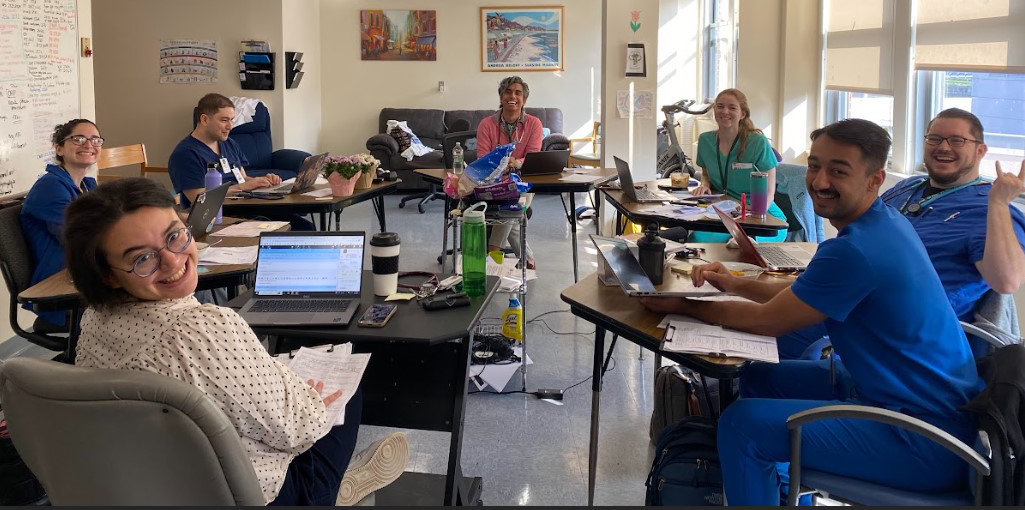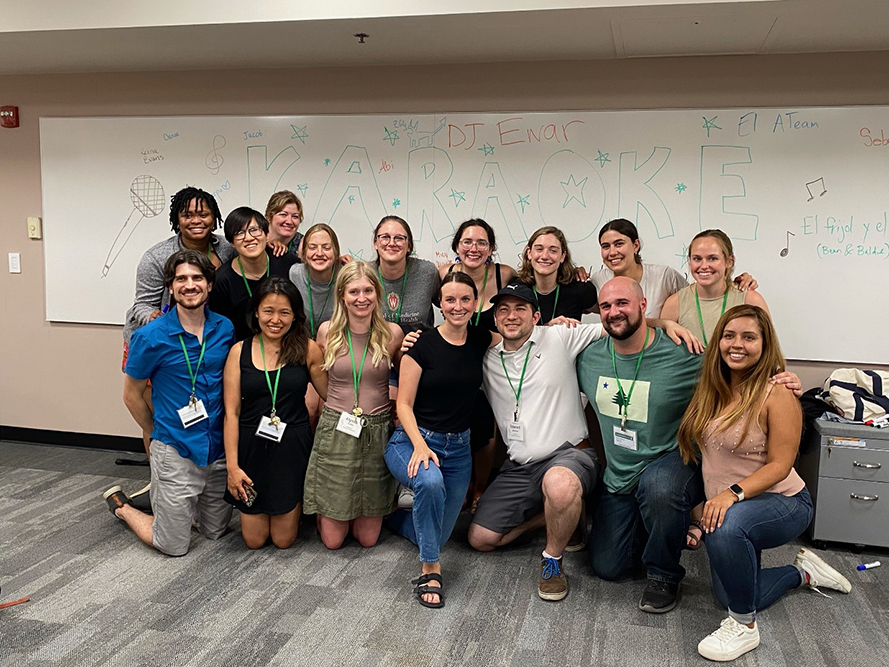Spanish Curriculum

Goal and Objectives
The mission of the Lawrence Family Medicine Residency is to train family medicine physicians to provide patient-centered care for the underserved populations. Our own patient population is predominantly Spanish-speaking; our goal therefore is for each resident to complete residency proficient to provide medical care in Spanish without the need for an interpreter. Our focus is on verbal Spanish language skills.
Overview of the Curriculum:
- It is neither expected nor required that residency applicants speak Spanish – just a desire to learn. LFMR has a nationally-known Spanish acquisition track record; residents here invariably develop strong Spanish communication skills by the end of their first year of residency and continue to build throughout their residency training.
- 5-day intensive language program at Dartmouth College (using the Rassias Method) during orientation in June/July prior to seeing any patients. (http://rassias.dartmouth.edu/). During the COVID19 Pandemic, LFMR worked with Rassias Institute on a virtual intensive language program that was offered this year.
- On site Spanish teacher/translator. A now retired high school Spanish teacher (Pat Donahue) provides scheduled one-on-one lessons for residents and shadows residents in their continuity clinics throughout their first year (and beyond if desired) for real world instruction.
- Each resident is paired with a bilingual medical assistant who provides language and cultural interpretation throughout residency.
- The best way to learn a language is daily immersion (with support) – majority of patient interactions are in Spanish 9with MA interpreter present in exam room in clinic)
First year residents who do not enter residency with Spanish proficiency are encouraged to participate in a 2-week language elective to obtain both a second intensive linguistic training experience in a Spanish-speaking country. The program provides funding to support the elective.
Components of the Curriculum
R1 Rassias Spanish Training
1 week: Dartmouth College – Hanover, NH
- Entering first year class attends this 5-day course together at Dartmouth; tuition, room & board covered by residency.
- Rassias Method is a unique approach that speeds language learning, increases language retention and has you speaking and understanding in “Ten days that make a difference”.
- Originally developed for Peace Corps training, it has been adapted by language teachers in North America, Europe, Africa, and Asia.
- Instruction is individualized to meet each resident’s needs, from those with no Spanish language at program entry to those with advanced Spanish proficiency.
For more information: http://rassias.dartmouth.edu/
R1 Spanish Language Elective
2 weeks. Faculty Coordinator: Anthony Valdini, MD, MS
- In addition to the 5 day intensive Spanish Rasisias course at Dartmouth College during Orientation, and individualized instruction in Lawrence throughout the year, the residency provides a supported Spanish language school experience during the R1 year for residents who do not have Spanish proficiency on entry to acquire a second intensive linguistic experience.
- Residents select the language school from a list of recommended overseas schools in the Caribbean, Mexico, and Central America
Programs our residents have reviewed well:
Columbia: Centro Catalina Language School http://www.centrocatalina.com/en/
Costa Rica: CPI (Centro Panamericanos de Idiomas) Spanish Immersion School http://www.cpi-edu.com
Costa Rica: Incultura Spanish Language School http://www.interculturacostarica.com/
Guatemala: San Pedro Spanish School https://sanpedrospanishschool.com/
Mexico: Instituto Cultural Oaxaca https://icomexico.com/
R1 Spanish Longitudinal Immersion and 1:1 teaching
Faculty Coordinator: Patricia Donahue
- On-site Spanish teacher/translator. A (now retired) high school Spanish teacher provides individualized lessons for resident and shadows residents in their continuity clinics for real-world instruction.
- Resident is paired with a bilingual medical assistant who provides language and cultural interpretation throughout residency.
- The best way to learn a language is immersion (with support) – majority of daily patient interaction are in Spanish, so residents can get lots of practice!
R1 Evaluation of Our Spanish Curriculum
Valdini A, Early S, Augart C, Miles HCR, Cleghorn D. Spanish Language Immersion and Reinforcement During Residency: A Model for Rapid Acquisition of Competency. Teaching and Learning Medicine. 2009;21(3):1-6. (https://www.tandfonline.com/doi/full/10.1080/10401330903020647)
Barr WB, Valdini A, St. Louis J, Weida N, and Marshall C. Si, Tu Puedes: An integrated Spanish Language Acquisition in Residency Utilizing Personal Instruction. Journal of Graduate Medical Education. Journal of Graduate Medical Education. 2018; 10(3):343-344. (https://www.jgme.org/doi/pdf/10.4300/JGME-D-17-00919.1)
ALTA Language Testing-Clinician Cultural and Linguistic Assessment
(http://www.altalang.com/language-testing/) – Developed by Kaiser Permanente to determine level of language proficiency of physicians. *Passing score” is 80% (level determined by Kaiser as proficient to see patients without an interpreter). Residents offered free testing (paid by residency) to certify their fluency to future employers, NGOs, or other entities.
Invited National Presentations on our Spanish Curriculum:
- AAFP Program Directors/ Workshop / Residency Program Solutions Residency Education Symposium “Innovation Showcase: Learning Spanish to Proficiency in Residency – ¡Si Tu Puedes!” Barr WB, Valdini A, Gravel JW, Augart C. March 2015 Kansas City, MO
- 2014 Society of Teachers of Family Medicine Spring Conference – “Learning Spanish in Residency – Yes it is Possible (It Can Be Done!)” Barr WB, Valdini A, Gravel JW, Augart C, Davids A. May 2014 San Antonio, TX

